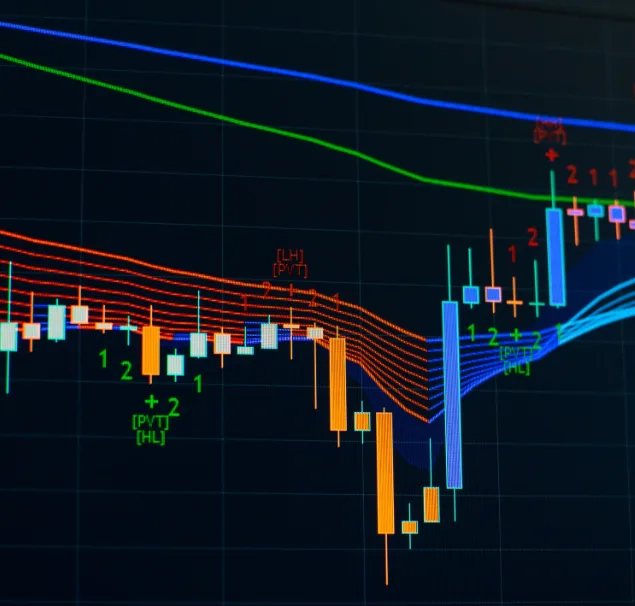
What is Indices Trading?
Indices trading involves buying and selling the collective performance of a group of stocks, representing a particular segment of the stock market or an economy. This method allows traders to speculate on the overall direction of the stock market or specific sectors without having to analyze the performance of individual companies. Indices are crucial in the financial markets as they provide benchmarks for measuring market performance and are used by investors to gauge the health of an economy or investment sector.

Understanding Indices
Stock market indices are composed of selected stocks to represent a particular market or a sector within that market. Each index has its own method of calculation, often based on the market capitalization or price of its constituent stocks. Major global indices include the S&P 500, which represents the performance of 500 large companies listed on stock exchanges in the United States; the Dow Jones Industrial Average, a price-weighted average of 30 significant stocks traded on the New York Stock Exchange and the NASDAQ; the NASDAQ Composite, which includes all NASDAQ-listed stocks; and the FTSE 100, which represents 100 of the largest companies listed on the London Stock Exchange. These indices serve as indicators of market trends and are used by investors worldwide to make informed trading and investment decisions.


The Mechanics of Indices Trading
Indices trading allows investors to speculate on the price movements of an entire index, rather than selecting individual stocks. This can be done directly through futures and options contracts that are based on the index value or indirectly by investing in Exchange-Traded Funds (ETFs) and mutual funds that replicate the performance of a specific index. The direct method involves trading contracts that forecast the future price of the index, offering opportunities for leverage and hedging. In contrast, ETFs and mutual funds provide a more accessible way for individuals to invest in the performance of an index through a single transaction, mirroring the index’s composition and performance.
Differences Between Trading Individual Stocks and Indices
Trading indices differs from trading individual stocks in several key ways. Indices provide a broader market exposure, allowing traders to invest in the overall performance of a market sector or the entire market, rather than focusing on the prospects of a single company. This approach reduces the risk associated with the volatility of individual stocks and requires less research and monitoring. However, it also means traders have less control over the specific components of their investment and may miss out on the high returns that successful stock picks can offer.
Advantages of Indices Trading
WiseProp Trader stands out by offering a no-challenge route, which comes with several distinct advantages:
Diversification
Indices trading naturally offers diversification, spreading the risk across multiple companies. This mitigates the impact of volatility or poor performance of individual stocks on the trader’s portfolio.
Lower Costs
Investing in an index through ETFs or mutual funds can be more cost-effective than buying all the individual stocks represented in the index. It reduces transaction fees and the complexity of managing numerous stock positions.
Accessibility
Indices trading provides an easy way to gain exposure to broad market trends or specific sectors with a single transaction. This simplicity makes it an attractive option for both novice and experienced investors looking to align their portfolios with overall market performance.
Strategies for Trading Indices
Trading indices requires a strategic approach to capitalize on the market’s movements. Here are some effective strategies:
Trend Following
This strategy involves identifying and following the market's overall direction. Traders look for long-term trends in indices and make trades that align with the direction of these trends, aiming to profit from the sustained movements.
Swing Trading
Swing traders take advantage of short-term price movements by identifying potential highs and lows within a trend. This strategy requires careful timing and analysis to enter and exit trades at optimal points for profit.
Leveraged and Inverse ETFs
For more experienced traders, leveraged and inverse ETFs offer opportunities to amplify returns or profit from declines in the market. Leveraged ETFs aim to deliver multiples of the daily performance of the index they track, while inverse ETFs seek to deliver the opposite of the index's performance, benefiting from market downturns.
Tools and Indicators for Successful Indices Trading
To navigate the complexities of indices trading successfully, traders utilize various tools and indicators:
Technical Analysis Tools:
Moving Averages
Help identify trends by smoothing out price data over a specific period.
RSI (Relative Strength Index): Measures the speed and change of price movements, indicating overbought or oversold conditions.
MACD (Moving Average Convergence Divergence)
Used to spot changes in the strength, direction, momentum, and duration of a trend.
Economic Indicators
Traders monitor key economic indicators such as GDP growth rates, employment figures, and inflation data to gauge the health of the economy and its potential impact on market indices.
Market Events
Significant events like central bank decisions, political developments, and major corporate announcements can drive index movements. Keeping abreast of such events is crucial for timely decision-making in indices trading.
Common Pitfalls in Indices Trading
Indices trading, while offering numerous opportunities, is also fraught with pitfalls that can undermine the efforts of even the most astute traders. Key challenges include:
Overleveraging
The allure of amplified profits through leverage can tempt traders to take on excessive risk, potentially leading to substantial losses. Proper risk management is crucial to avoid falling into this trap.
Emotional Trading
Emotional decisions can lead to erratic trading and deviation from planned strategies. Maintaining discipline and adhering to a well-thought-out trading plan is essential for long-term success.
Getting Started with Indices Trading
For those new to indices trading, the journey begins with making informed decisions about the tools and resources at their disposal:
Choosing the Right Broker and Trading Platform
Select a broker that offers competitive pricing, robust trading tools, and access to the indices markets you’re interested in. The trading platform should be user-friendly, reliable, and equipped with the necessary analytical tools.
Education
Investing in education is paramount. Many brokers and independent platforms offer courses, webinars, and seminars to help traders understand market fundamentals and advanced strategies. Joining trading communities can also provide valuable insights and support from fellow traders.
Conclusion
Indices trading offers a unique avenue for engaging with the financial markets, allowing traders to speculate on entire sectors or economies through a single transaction. While the potential for diversification and lower costs are significant advantages, the risks associated with trading strategies and market volatility should not be underestimated. Aspiring traders should prioritize education, choose their trading partners carefully, and approach the markets with a disciplined and well-researched strategy. With the right preparation and mindset, indices trading can be a profitable endeavor.
